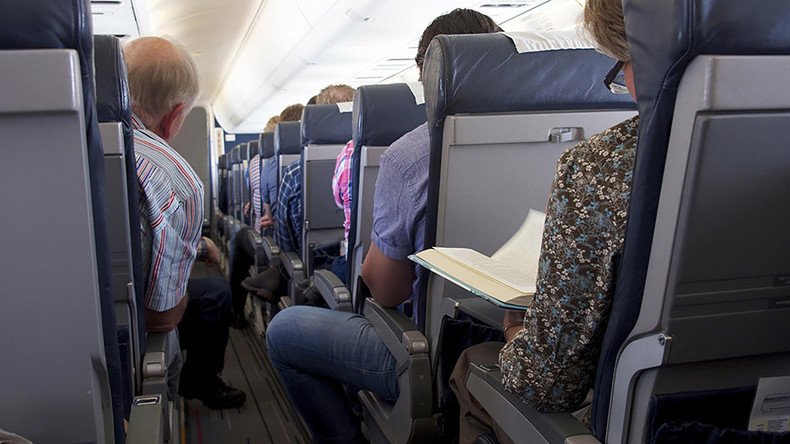‘Incredible shrinking airline seat’: Court orders FAA review of seats on US flights

A US court has ordered the Federal Aviation Authority to review seat sizes after an advocacy group alleged that passengers' lives were at risk due to cost and space-saving initiatives on board commercial flights.
READ MORE: TSA to enact stricter electronic screenings at all US airports
“This is the case of the incredible shrinking airline seat,” Judge Patricia Millett wrote in her ruling. “As many have no doubt noticed, aircraft seats and the spacing between them have been getting smaller and smaller, while American passengers have been growing in size.”
The seat pitch, or the distance between the back of a seat and the back of the seat in front of an average airline seat in economy class in the US has decreased from 89 cm (35 inches) in the ‘70s to 79cm (31 inches).
Meanwhile, the average width of an airline seat has narrowed from 46cm (18 inches) to 42 cm (16.5 inches) over the last decade.
The FAA had argued that it was a non-issue as seat sizes did not impact evacuation procedures on board aircraft in emergency situations.
"That makes no sense," Judge Millett wrote, drawing the analogy of conducting "a study on tooth decay that only recorded participants’ sugar consumption" but did not look at brushing and flossing.
Width between coach seat armrests was 18.5 in. on Boeing 777 in the ’90s & A380 in the 2000s. Now they're 1.5" narrower. Join FlyersRights! https://t.co/Dvdf8BXazJ
— Flyers Rights (@KendallFlyers) July 29, 2017
“We applaud the court’s decision, and the path to larger seats has suddenly become a bit wider,” said Kendall Creighton, a spokeswoman for Flyers Rights, as cited by the Guardian.
All three sitting judges on the US Court of Appeals for the District of Columbia voted in favor of the proposed review which would oblige the FAA setting a minimum airline seat size.
A study conducted in 2014 found that, between 1999 and 2012, the average American male’s waist grew from 38.9 inches to 39.7 inches with women showing a slightly larger growth from 36.3 inches to 37.8.
For context, the "abdominal obesity" zone starts at 40.2 inches for men and 34.6 inches for women, according to USA Today.
The FAA "does consider seat pitch in testing and assessing the safe evacuation of commercial, passenger aircraft. We are studying the ruling carefully and any potential actions we may take to address the court’s findings," the agency's spokesman Greg Martin wrote in an e-mail as cited by Reuters.
Building Blockchain: Russian airlines S7 to accept ethereum for tickets https://t.co/MEKP9xhYxbpic.twitter.com/KgvwtZgPai
— RT (@RT_com) July 27, 2017
The ruling does not require a review of the potential impact on the health or comfort of passengers, merely the threat posed by shrinking seat sizes in the event of an emergency.
A bill currently under consideration in the House of Representatives would require the FAA to set minimum seat sizes as well as a minimum distance between rows.












